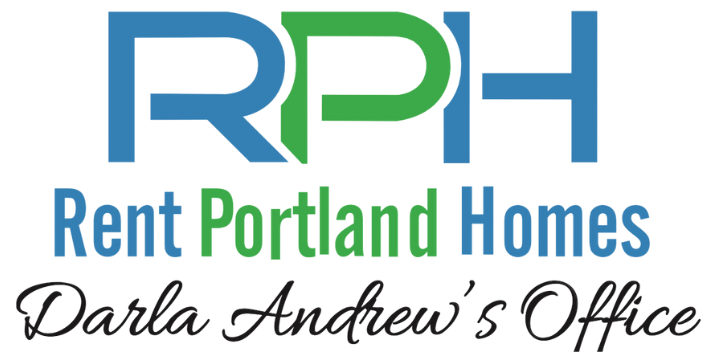Managing a rental property is always a complicated endeavor, but keeping tabs on key metrics can make the job a whole lot smoother. Whether you’re managing a single rental or a portfolio of properties, understanding and monitoring the right statistics can help you optimize operations, improve tenant satisfaction, and boost your bottom line. Let’s dive into some of the essential metrics every property manager should keep an eye on.
1. Occupancy Rate
First up is the occupancy rate, which is the percentage of your rental units that are occupied at any given time. It’s a straightforward metric but incredibly telling. High occupancy rates indicate that your properties are desirable and well-managed, while low occupancy rates might signal problems that need addressing, such as high rent, poor property condition, or ineffective marketing strategies.
2. Tenant Turnover Rate
Next, we have the tenant turnover rate. This measures how frequently tenants move out and new ones move in. A high turnover rate can be costly and time-consuming, with expenses piling up from cleaning, repairs, and marketing vacancies. By keeping an eye on turnover, you can identify patterns and work to improve tenant retention, such as by enhancing the living experience or addressing tenant concerns promptly.
3. Rent Collection Rate
It goes without saying that your rent collection rate is another critical metric. It’s the percentage of rent collected on time compared to the total rent due. Consistent rent collection is vital for maintaining cash flow and ensuring you can cover your expenses. If you notice a drop in this rate, it might be time to review your tenant screening process or implement stricter policies on late payments.
4. Maintenance Request Response Time
How quickly you respond to maintenance requests can significantly impact tenant satisfaction, which ties back into retention. It also can make a big difference in saving money on repairs when maintenance problems go unchecked. Tracking the average response time helps ensure that maintenance issues are addressed promptly, which prevents minor glitches from spiraling out of control while also keeping tenants happy. A quick response time can also enhance your reputation as a proactive and attentive property manager.
5. Cost Per Lease
Understanding the cost per lease helps you gauge the efficiency of your marketing and leasing efforts. This metric includes all costs associated with attracting and securing a new tenant, such as advertising, agent fees, and administrative costs. By monitoring this, you can identify which marketing strategies are most effective and cost-efficient, allowing you to allocate resources more wisely.
6. Net Operating Income
Net Operating Income (NOI) is a crucial metric for assessing the profitability of your properties. It’s calculated by subtracting operating expenses from gross rental income. A positive NOI indicates that your property is generating income above your expenses, while a negative NOI suggests you need to reevaluate your operations to boost profitability.
7. Tenant Satisfaction Score
Tenant satisfaction scores provide valuable insights into how your tenants feel about their living experience, which you can collect through surveys or feedback forms. High satisfaction scores often lead to lower turnover rates and better word-of-mouth referrals. By regularly gauging tenant satisfaction, you can identify areas for improvement and make changes to enhance your tenants’ experience.
8. Marketing Effectiveness
Marketing effectiveness metrics, such as lead-to-lease conversion rates, help you understand whether your marketing is reaching the right audiences. Tracking how many leads turn into leases can show you whether you need to switch up your marketing strategy so you can constantly adapt your approach to attract more qualified tenants.
9. Delinquency Rate
The delinquency rate measures the percentage of tenants who are behind on rent payments. A high delinquency rate can be a red flag, indicating potential issues with tenant screening or economic factors affecting your tenants. Keeping this rate low is crucial for maintaining consistent cash flow and avoiding financial strain.
10. Capital Expenditure
Capital expenditure is the money used to upgrade or improve your properties. Tracking capital expenditure is essential for budgeting and financial planning. It helps you anticipate future expenses and ensures you’re setting aside enough reserves for major repairs or improvements, ultimately preserving and enhancing your property’s value.
11. Lease Renewal Rate
Similar to your turnover rate, the lease renewal rate shows the percentage of tenants who choose to renew their leases rather than move out. High renewal rates are a sign that tenants are satisfied with their living conditions and your management practices. Encouraging renewals through excellent service and favorable lease terms can reduce turnover costs and maintain stable occupancy.
12. Property Appreciation
Monitoring property appreciation metrics involves keeping track of your property’s value over time. This can provide insights into the long-term profitability of your investment. Factors influencing appreciation include market conditions, property improvements, and location. Staying informed about property values helps you make strategic decisions about buying, selling, or refinancing.
13. Utility Consumption
Tracking utility consumption, such as water and energy usage, can help you identify inefficiencies and reduce operating costs. Implementing energy-saving measures or upgrading to more efficient systems can not only lower expenses but also help your properties appeal to Portland’s environmentally conscious tenants.
14. Legal Compliance
Ensuring your properties comply with local, state, and federal regulations is critical to avoiding legal issues and potential fines. Keeping track of compliance metrics, such as regular inspections and adherence to safety codes, helps you stay ahead of legal requirements and maintain a safe living environment for your tenants.
15. Return on Investment for Property Improvements
Calculating your return on investment for property improvements helps you determine whether the money spent on upgrades is generating a positive financial return. This metric can guide your decision-making on future investments, ensuring that you’re focusing on improvements that enhance property value and tenant satisfaction.
Are You on Track for Property Management Success?
Being a successful property manager involves more than just collecting rent and fixing leaks. By monitoring these key metrics, you can gain valuable insights into your property’s performance and make decisions to enhance tenant satisfaction and boost your bottom line. No matter how long you’ve been working as a property manager, keeping an eye on these statistics will help you navigate the complex world of property management with confidence and ease. And if you’re looking for help ensuring your rental property is performing at the best of its ability, Rent Portland Homes Darla Andrew’s Office is here to help.


Recent Comments